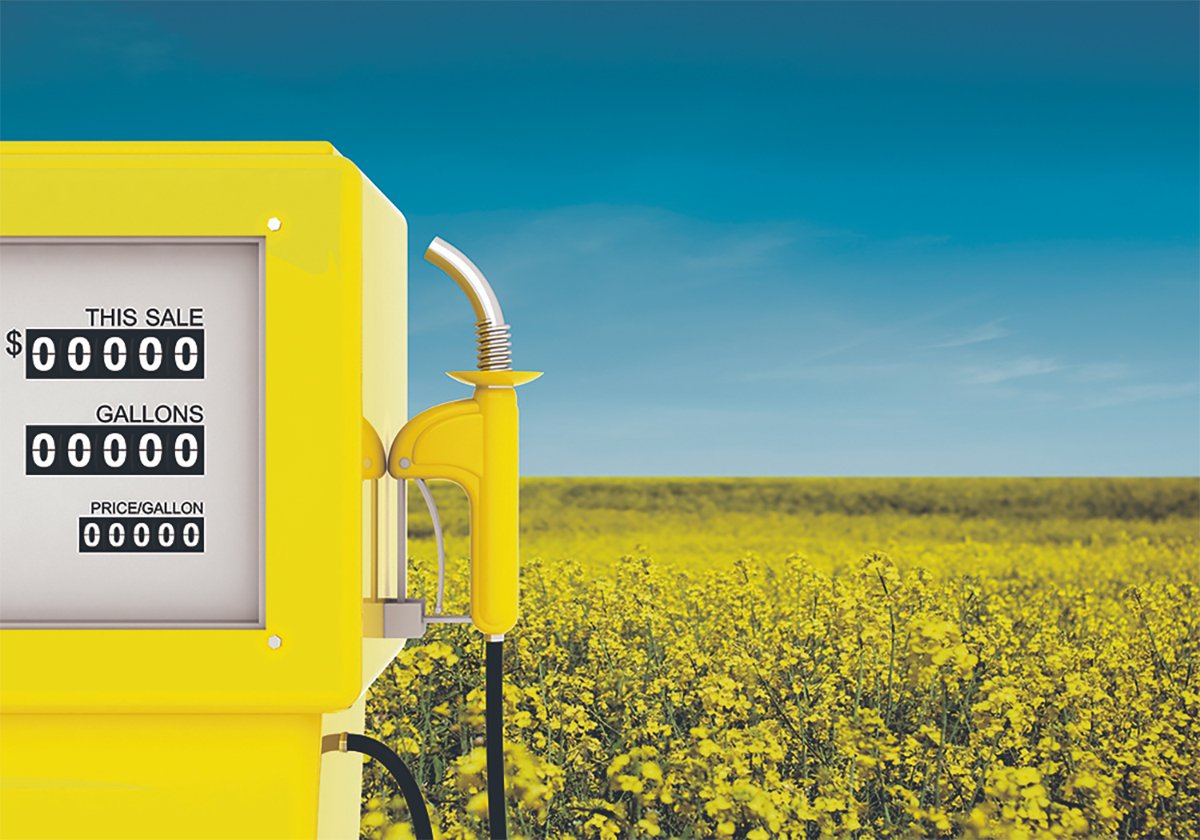Fed cattle prices drop
The U.S. Department of Agriculture has posted rules for entry of older Canadian cattle.
Trade in older cattle could resume by Nov. 16.
Fed cattle prices fell last week as packers struggled with lower beef prices and weak margins, but there was a slight recovery late in the week, said Canfax.
The Canfax weekly average steer price was $84.32 per hundredweight, down $3.36 from the week before, while heifers fell $2.02 to $84.75.
Volumes were light with about 18,000 head trading, down from 22,000 the week before. Fed cattle exports were steady.
Read Also

Biofuel sector happy with federal budget
Advanced Biofuels Canada says new Biofuel Production Incentive is a lifeline until CFR amendments are in place.
Canfax expected the Canada-U.S. basis would widen. It also said the stronger Canadian dollar will make it hard to post higher prices.
Analysts said they expect U.S. cattle on feed numbers will show a tightening of market ready supplies by
November.
Beef price weaker
U.S. cut-out prices initially rose last week, but then fell, said Canfax.
By week’s end, the Choice was down $2.29 US to $146.05 while the Select slipped $2.98 to $139.32. Lower prices stimulated beef movement. The weekly load count jumped 25 percent to 1,380 loads.
Canadian packers had to contend with the slumping U.S. cutout and rising Canadian dollar.
The Calgary wholesale market for delivery this week was $148-$149.
Feeders under pressure
Weaker fed prices, the strong loonie and strong feedgrain prices pushed the feeder market lower, said Canfax.
Alberta auction market volume dropped two percent to 45,347 head.
Heifers were under the greatest pressure with most weight categories down $1.50 to $2 per cwt.
Steers 600 pounds and heavier were steady to $1.25 lower while lighter animals dropped $2-$2.50.
Some markets late in the week reported sales $6-$7 below the previous week, Canfax said.
Feeder volumes are expected to grow in the coming weeks, putting downward pressure on prices.
If feedgrain prices remain strong, feeder cattle prices will likely decline into the late summer and fall.
Cull cows recovered slightly with D1, 2 cows up 50 cents per cwt. to $40.36. Butcher bulls were down 50 cents to $38.70.
The bred cow and cow-calf market was too light to quote. Most pairs are being split and there are cows going into the cull market.
Cattle on feed
The number of cattle on feed in Alberta and Saskatchewan on Sept. 1 was 796,811 head, down one percent from 2006, Canfax said.
Looking further back, the number was 16 percent larger than in 2005 and, to compare to pre-BSE years, it was nine percent larger than in 2002 and unchanged from 2001.
Placements in August were down one percent from 2006.
The only weight class with fewer head placed compared to last year was 700-799 lb. feeders, down 14 percent.
The under 600 lb. category increased by 18 percent, while the 600-699 lb. group saw a 28 percent increase. Heavy feeders were up one percent.
Alberta auction volume in August rose three percent over last year, suggesting placements should be larger. However, the feeder export market was also strong.
Feeder exports from Western Canada in August totalled almost 27,000, up from about 10,000 head in the same month last year.
The number of fed cattle slaughtered domestically or exported for slaughter rose six percent.
Hogs steady
U.S. slaughter plants increased their kill last week thanks to a good supply of market ready hogs and good margins.
Smithfield said it would increase slaughter at a plant in Sioux City, Iowa, to supply orders to China.
Iowa-southern Minnesota hogs traded at 47.50 US per cwt. on Sept 14, down from $46 posted on Sept. 7.
The U.S. composite pork carcass cutout value was fairly steady all week, closing at $67.98 Sept. 14, up from $67.31 Sept. 7.
U.S. slaughter for the week was estimated at 2.23 million, compared to 1.93 million the week before and 2.14 million a year ago.
Bison report
The USDA rule on expanded Canadian imports also included older bison. Bison prices rose last week in the United States, but the stronger Canadian dollar pressured prices here, said the Canadian Bison Association.
Grade A carcasses from bison bulls younger than 30 months in the desirable weight range in Canada were $1.60 to 1.90 per lb.
Sales to the U.S. saw prices of $1.85 to $1.95. Heifers were $1.40-$1.75 in Canada and $1.80 on sales to the U.S.
Rail prices for top quality, youthful, older-than 30-month bulls and heifers averaged $145, with sales to $160.
Cull cows and bulls ranged from 45 to 60 cents per lb. hot hanging carcass. Check with marketers regarding large herd bulls for prices and acceptability.
Lambs weaken
Beaver Hill Auction in Tofield, Alta., reported 1,484 sheep and 135 goats traded Sept. 10. Sheep and goats were steady to slightly weaker.
Lambs lighter than 70 lb. were $134-$153 per cwt.
Lambs 70 to 85 lb. were $126-$139, 86 to 105 lb. were $124-$137 and 106 lb. and heavier were $120-$133.50.
Rams were $55-$96 per cwt. and cull ewes $52-$67 per cwt. Good kid goats were $170-$202 per cwt. Goats lighter than 50 lb. were $100-$120 per cwt.
Nannies were $40-$88 per cwt. and mature billies were $139-$170.
Beaver Hill will run weekly sales this fall.
Ontario Stockyards reported 2,231 sheep and lambs and 243 goats traded last week.
An average run of light lambs traded at barely steady prices. All classes sold steady.














